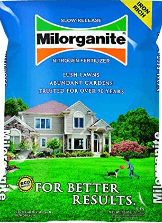Deer are a common sight in many parts of the United States, and while they can be beautiful to watch, they can also cause damage to gardens, crops, and landscaping. There are a variety of methods for controlling deer populations, and the best approach will depend on the specific situation. In this article, we will discuss the different types of natural deer control and how they can be used and combined to effectively manage deer populations.
Physical Barriers
The first type of natural deer control is the use of physical barriers. These can include fencing, walls, and other structures that block deer from entering a specific area. The most effective type of fencing is a tall, solid barrier that is at least 8 feet high. This type of fencing can be made from a variety of materials, such as wood, vinyl, or mesh. It is important to ensure that the barrier is properly installed and maintained to prevent deer from finding ways to get through or over it.
Natural Repellents
Another type of natural deer control is the use of repellents. These can include both chemical and physical repellents. Chemical repellents are typically made from a variety of natural ingredients, such as hot pepper, garlic, and other strong-smelling substances. These repellents work by creating an unpleasant smell or taste for deer, making them less likely to enter an area.
There are several organic based natural deer repellents that can be purchased or you can make your own.
Natural repellents have ingredients such as hot peppers, eggs, and salts. If something is organic, it was alive or produced by something alive, like blood meal or bone meal. If you check out our deer repellent recipes page you will find over 50 homemade deer repellent recipes mostly using natural products.
Natural products also include urine, soap, skunk scent and blood from meat.
Products that fall into a category like chemical free, would be Milorganite. Milorganite is a bio-solid fertilizer that repels deer by smell.
Mechanical Deterrents
There are other natural deer control strategies besides repellents. Among them are electronic deer repellents, ultrasonic deer controls, wireless fencing, and regular fencing. Read more about these chemical free deer controls at
Natural deer repellent can also be classified as "organic" deer control, "chemical-free" deer control, and "green" deer control. All of these are slightly different. Physical repellents, on the other hand, use motion, noise, or light to scare deer away. These can include motion-activated sprinklers, ultrasonic devices, or flashing lights.
Habitat Modification
A third type of natural deer control is habitat modification. This involves altering the environment to make it less attractive to deer. This can include planting deer-resistant plants, removing food sources, and creating barriers to deer movement. For example, planting a hedge or row of shrubs along the perimeter of a garden can make it more difficult for deer to access the area.
Combinations
Finally, it is important to note that a combination of these methods is often more effective than using just one method alone. For example, a combination of fencing and repellents can provide a physical and psychological barrier to deer. Similarly, planting deer-resistant plants and removing food sources can make the environment less attractive to deer, making it less likely that they will enter an area.
Natural deer repellent protects your garden and landscape without putting your family at risk. Organic liquid repellents include Deer Away, deer chaser electronic control and deer-off.
With natural deer control products you can protect your family from deer ticks and their potential threats while not risking your family's health. There are several natural deer control products that can be combined for a total multi-faceted approach to controlling your deer.
Conclusion
To summarized, here are a variety of natural methods for controlling deer populations. These include the use of physical barriers, repellents, and habitat modification. The best approach will depend on the specific situation, and a combination of methods is often more effective than using just one method alone. By using a combination of these methods, it is possible to effectively manage deer populations and protect gardens, crops, and landscaping from damage.


